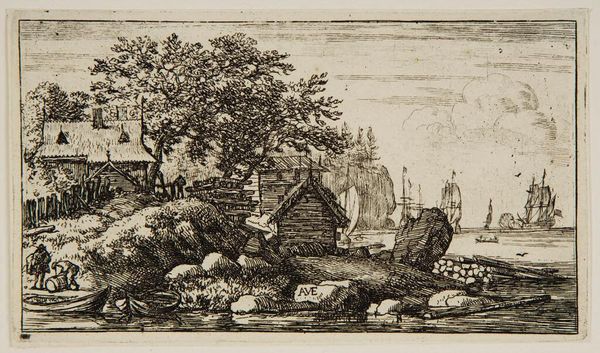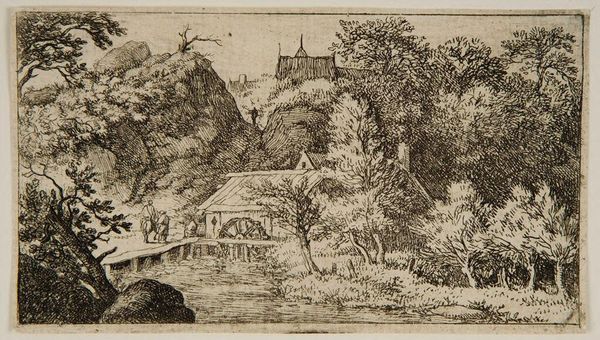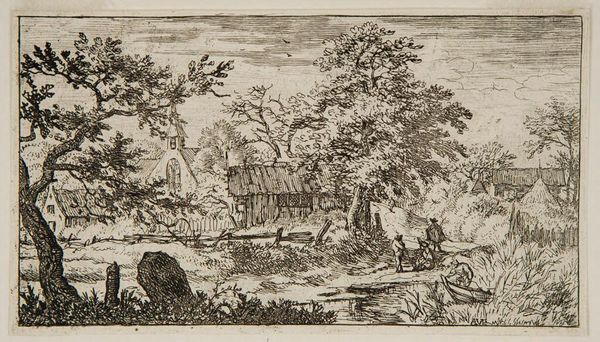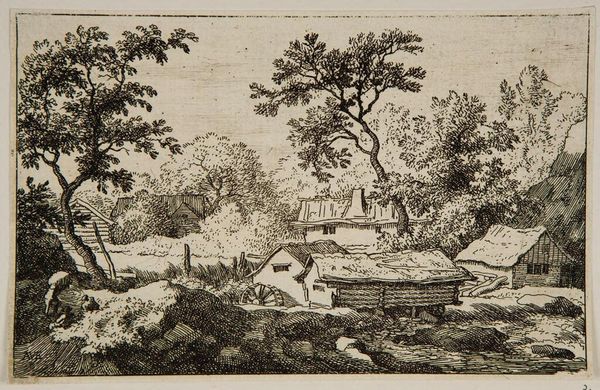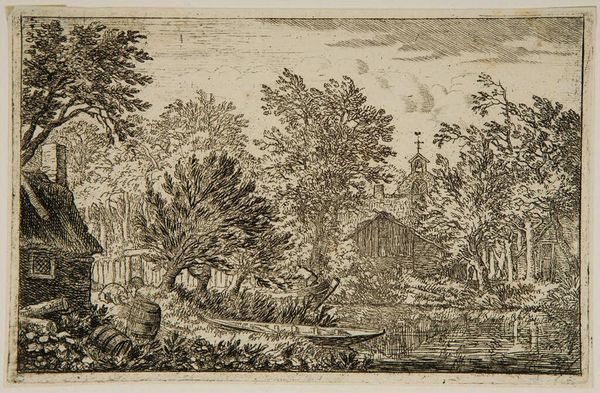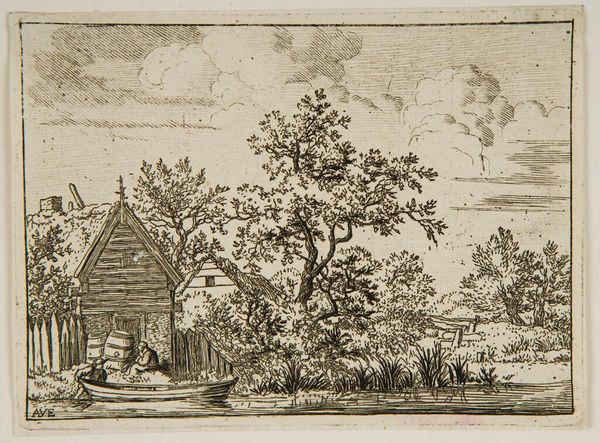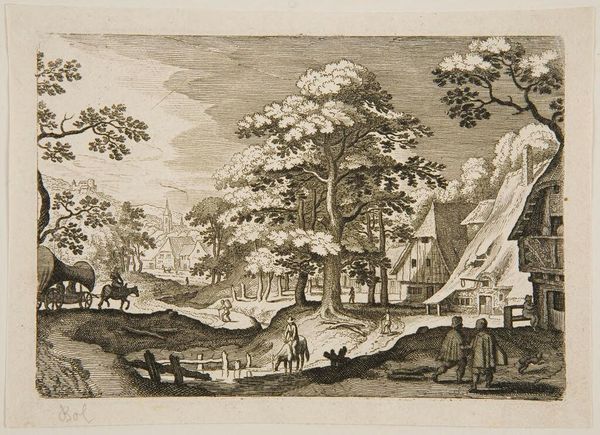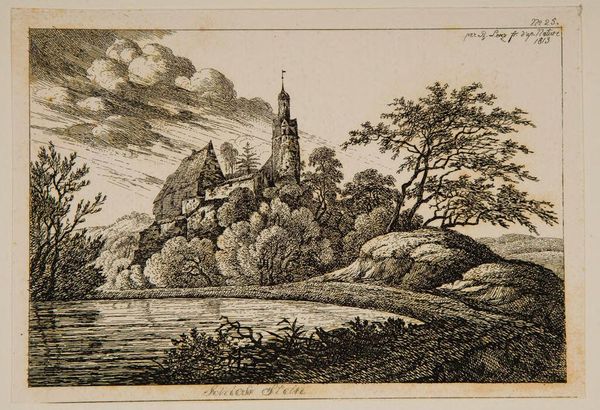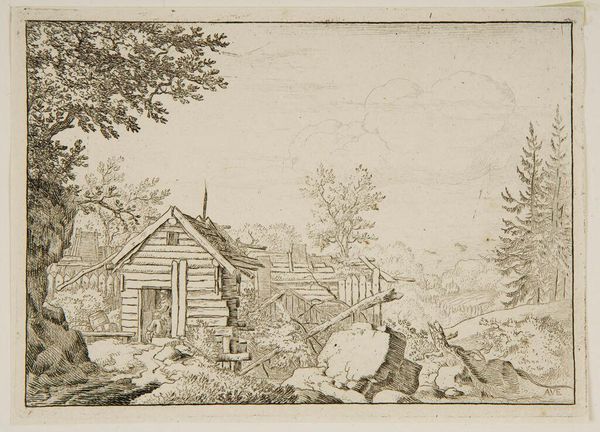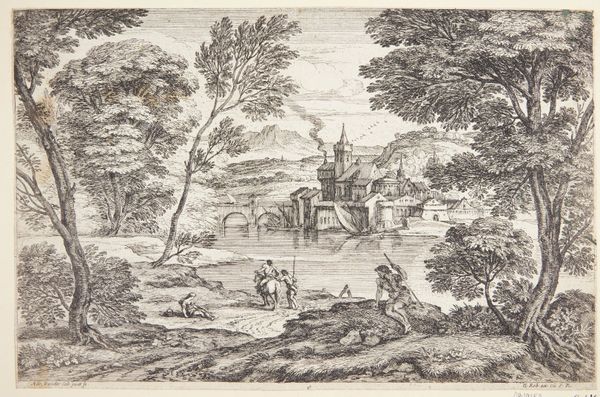
Barrels and Planks on the Shore of a River c. 17th century
0:00
0:00
Copyright: CC0 1.0
Curator: This is Allart van Everdingen's print, "Barrels and Planks on the Shore of a River." I'm immediately struck by the quiet sense of industry. Editor: There's a real feeling of daily life being lived here, isn't there? Simple, straightforward—the labor of the everyday etched into the landscape. I am curious about the role of religion in these moments of daily life. Curator: Absolutely, the church dominating the background reminds me of the cultural influence it had over the lives of the working class in that era. Everdingen seemed quite interested in the socio-economic reality of the time. Editor: The presence of barrels, planks, and boats, and the inclusion of labor, make the print more than just a pretty scene. These are elements that directly engage with the political economies of the time. Curator: It's also interesting to consider how the art market itself shaped these images, what subjects were deemed saleable, and to whom. Editor: Right. It prompts us to consider the relationship between these scenes of labor and the consumers of such art, what narratives of class and labor were being consumed alongside it. Curator: A reminder that art is always implicated in the systems it depicts, and it’s important to acknowledge our own position as we reflect on this art. Editor: Exactly, and acknowledging those complexities can deepen our understanding of both the artwork and ourselves.
Comments
No comments
Be the first to comment and join the conversation on the ultimate creative platform.
